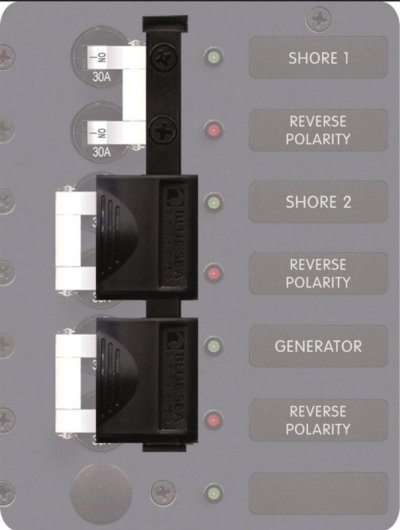<snip>
Install a bypass switch that will pass shore or generator power around the inverter and power your loads. It's an important backup in case the inverter has issues, plus a convenient and safe way to have power onboard while working on the inverter.
Rather than picking a few things that you want to be inverter powered, pick the few things that you absolutely do NOT want to be inverter powered. This list probably includes nothing more than 1) electric hot water heater, 2) HVAC, 3) shore charger(s). I would put EVERYTHING else on the inverter. Now this will be influenced by how your boat is wired, and you will need to find a happy median. For example, it's common for HVAC to be on a separate shore power circuit, so that's easy to keep off the inverter. A hot water heater and shore chargers may be more difficult. In some cases you may want to leave the hot water heater on the inverter, but remember to turn it off when not on shore or gen power.
Get an inverter/charger, not just an inverter. When wired correctly, the inverter/charger will automatically detect the presence of shore or gen power, switch the loads over to that power source, and start charging the batteries. It's super convenient, and transparently hands loads off between inverter and shore power.
Once you have an inverter, you will need to keep an eye on your batteries because you will be using them more. And as you use more and more AC power through the inverter, you are likely going to want to grow you battery bank size, increase charging capability, etc.


